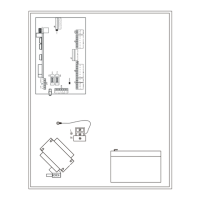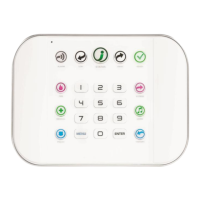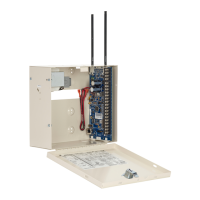Advisor Advanced ATSx000A(-IP) Installation and Programming Manual 241
Glossary
The control of entry to, or exit from, a security area through doors.
Action is a user programmed function, which can be done automatically
according to the programmed schedule.
Action lists are used to group configured actions. They can be done
automatically according to the programmed schedule.
See Normal / Active / Tamper / Inhibited / Isolated / Masked / Fault.
The state of a security system when a device connected to a zone is
activated and the condition of the area is such that activation should be
signalled. For example, a door lock is broken, causing a siren to sound.
A procedure to transmit alarm events or other events to the central station
by means of a dialler and a set of rules called a protocol.
The control over alarm functions.
A section of premises that has specific security requirements. The Advisor
Advanced system allows any premises to be divided into different areas
having different security requirements. Each area has its own zones. Each
area is identified by a number and a name. For example, Area 1 Office,
Area 2 Workshop, Area 3 Boardroom, etc.
Armed display activates on a keypad after particular idle time. In this mode,
the information displayed on LCD and LED is very limited for security
reasons. A user intervention is necessary for return to a normal display
mode.
An automatic setting of the premises started by a schedule or an exception.
See Schedule, Exception.
An alarm triggered by a security device like a PIR or door contact, indicating
someone has entered without authorized access. May also be referred to as
an intrusion alarm.
A medium holding credentials by which a user can be identified in a security
system. A card is associated in the user configuration to a user by which the
access rights are defined. Also referred to as a badge. Cards are used on
readers or keypads with built-in readers.
A company that monitors whether an alarm has occurred in a security
system. The central station is located away from the premises/area it
monitors.
A set of rules that is created by logic inputs and logic equations. Used to
control outputs and user groups.
An electronic device that is used to gather all data from zones on the
premises. Depending on programming and status of areas, it generates
alarm signals. If required, alarms and other events can be reported to the
central station.
A flashing underline character on the liquid crystal display (LCD) that
indicates where the next character entered on the keypad will appear.

